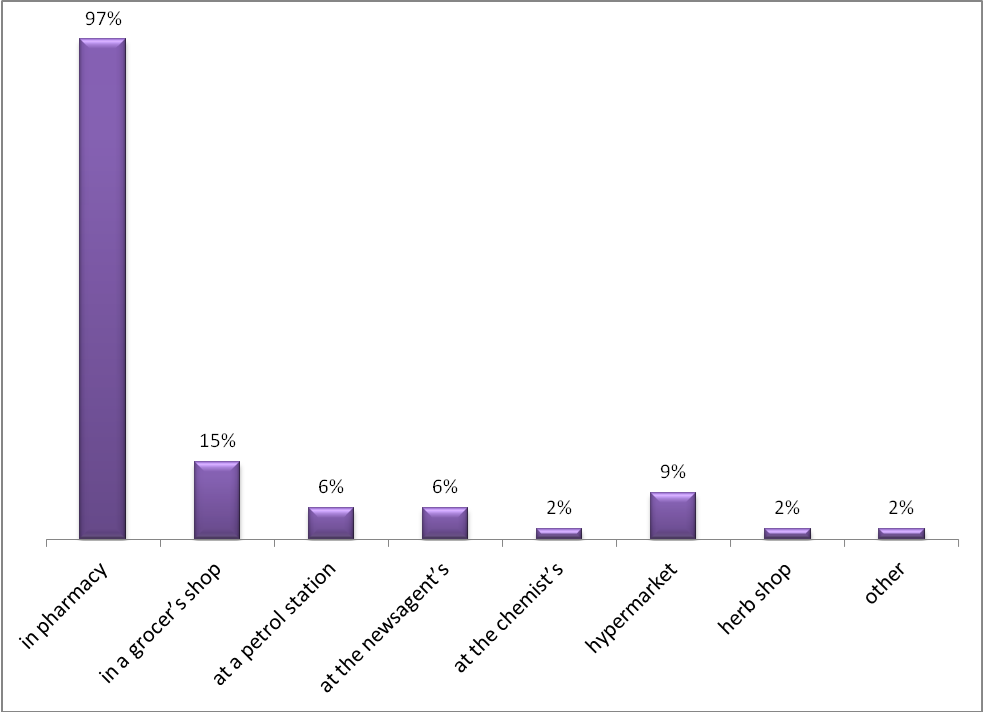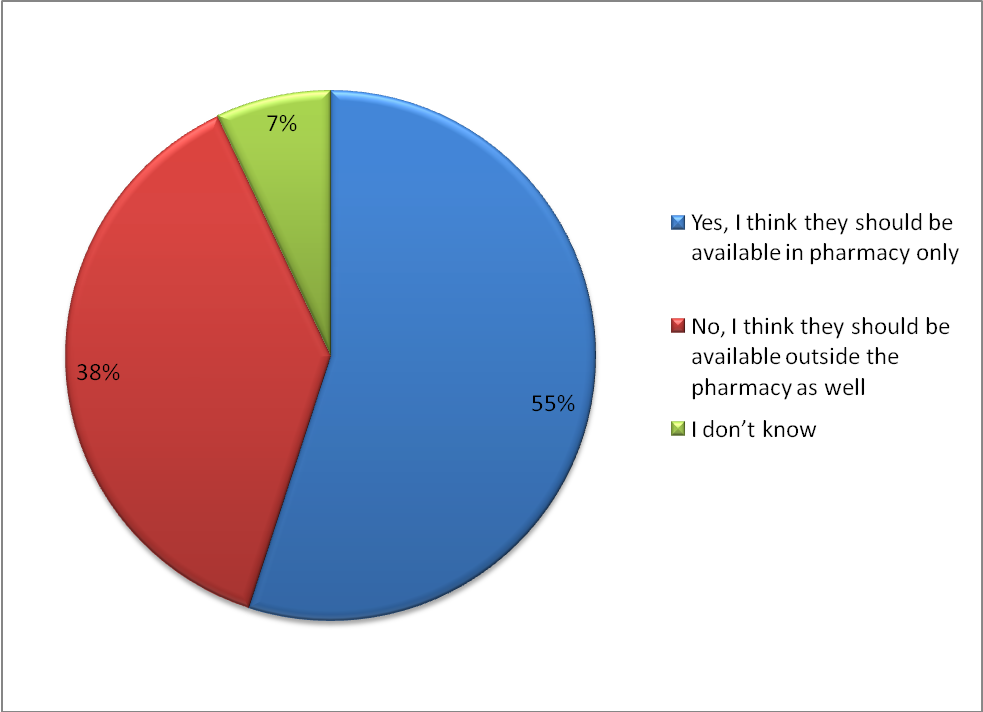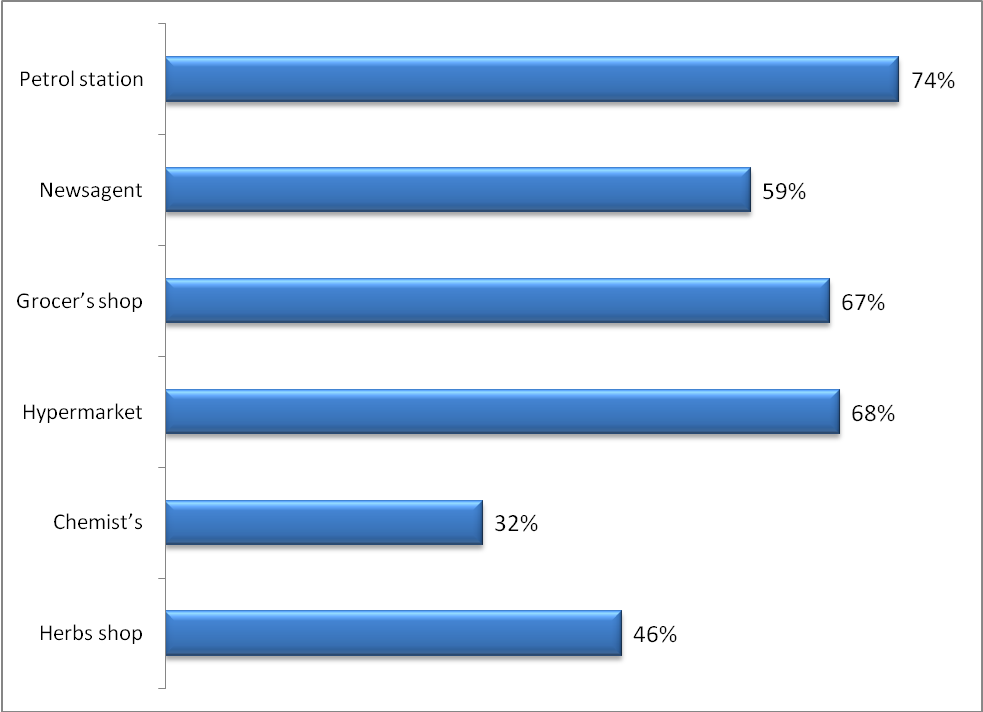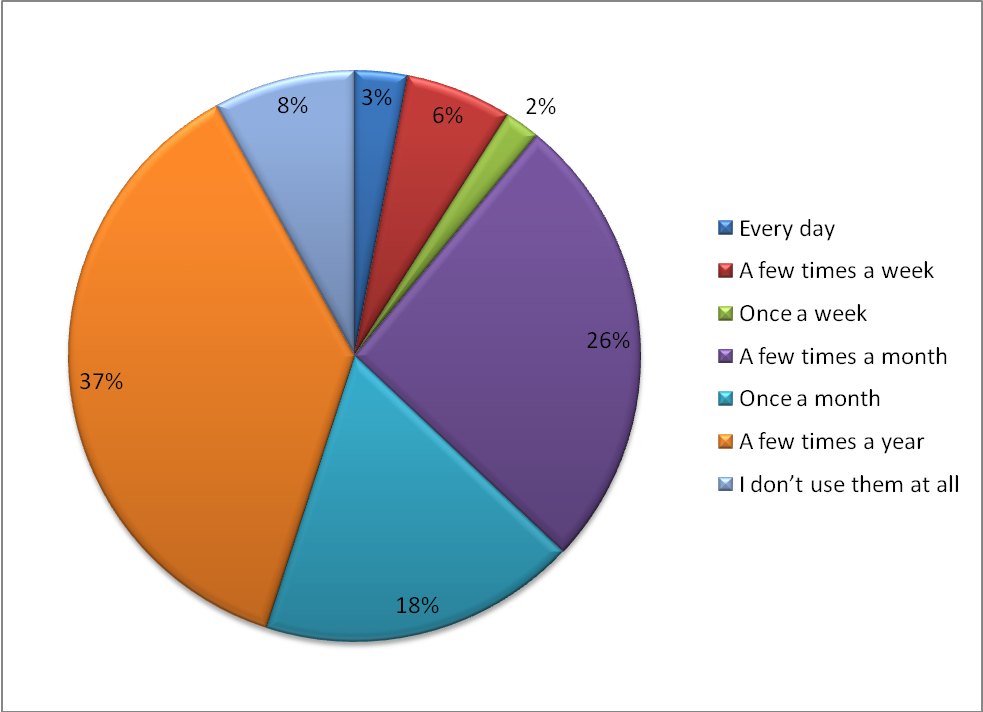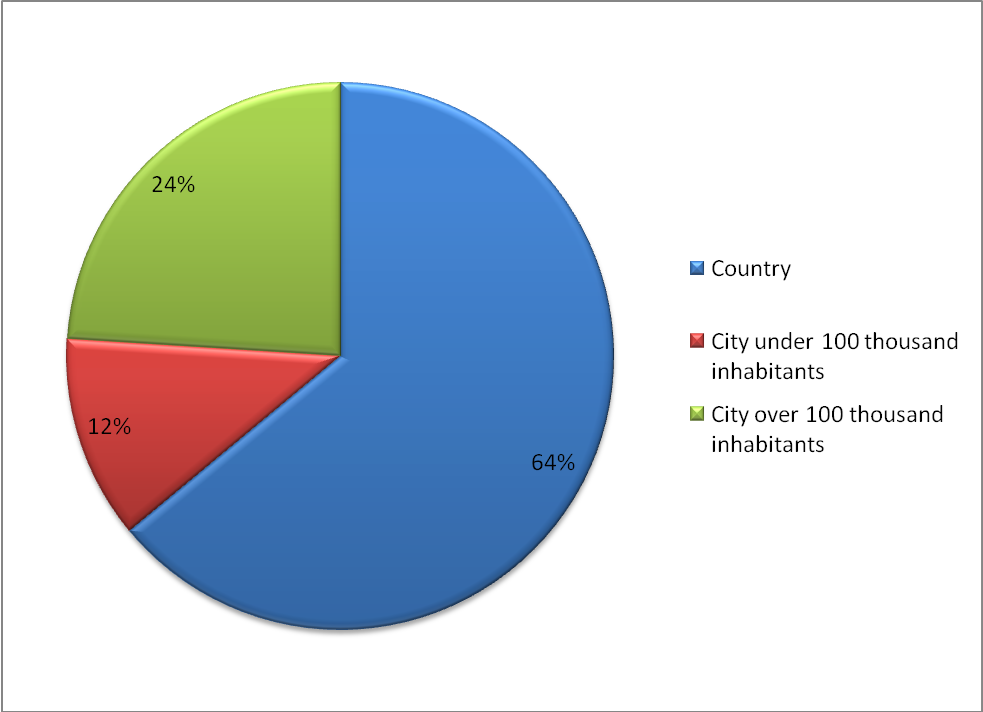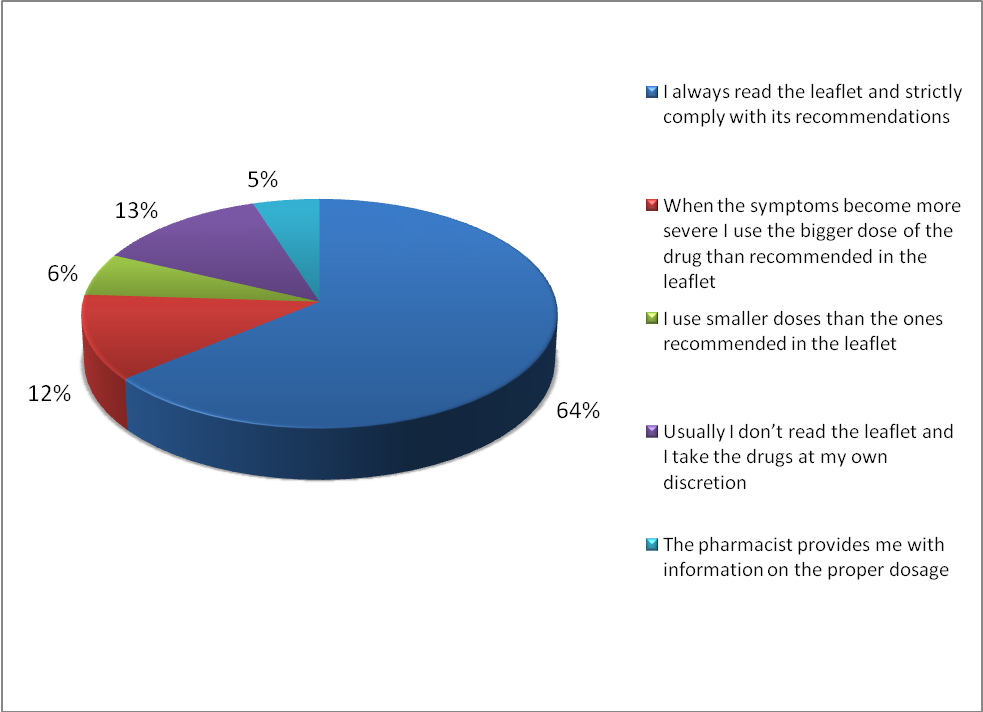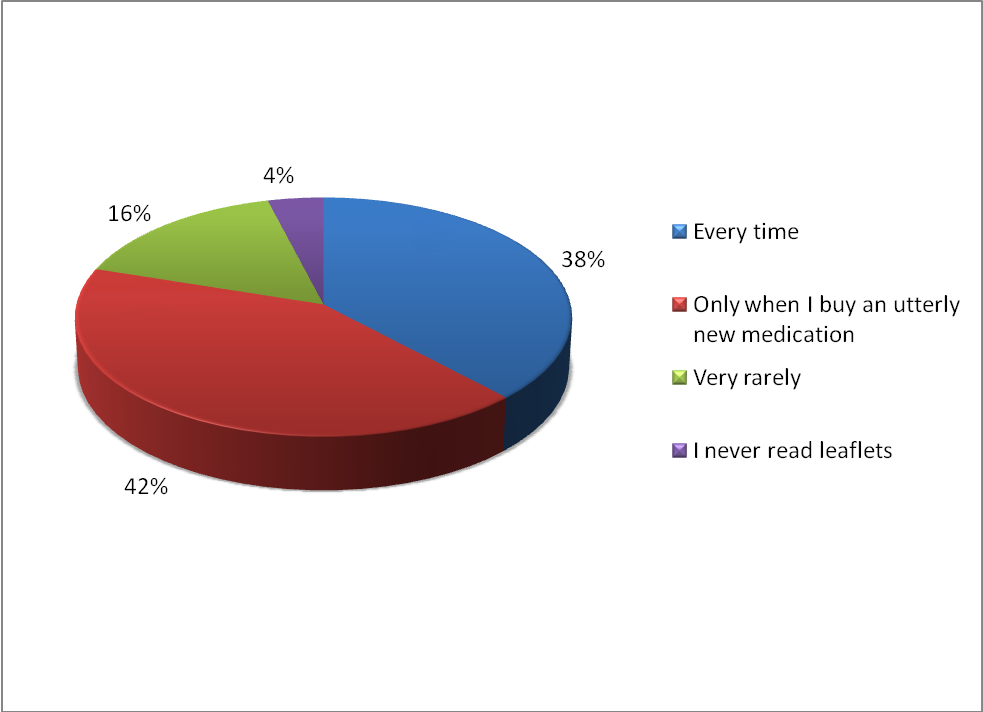Opinion of patients on analgesics drugs used in the process of self-medication
-
Copyright
© 2012 PRO MEDICINA Foundation, Published by PRO MEDICINA Foundation
User License
The journal provides published content under the terms of the Creative Commons 4.0 Attribution-International Non-Commercial Use (CC BY-NC 4.0) license.
Authors
The surveyed group was divided by age, education, place of purchase of the medicine, place of residence. The study surveyed the understanding of a medicine leaflet. 97% of respondents buy analgesics from a pharmacy, 9 % in a hypermarket and 5% in a grocery store, 4% at a petrol station.
Education defines the comprehension of a leaflet. 79% with the tertiary education people understand the leaflet and 38% with the primary education people understand the leaflet.
Overall men do not read medicine leaflets and most frequently misuse medicines.
The education, sex and place of residence have an important influence on the purchase and the way of medicine administration by patients in Poland.
Introduction
Medicines available without a prescription from a healthcare professional are used not only by elderly and middle-aged people but also by the young and occasionally by children. However, the mode of application of the analgesic drugs of this kind leaves a lot to be desired. The majority of the patients do not read information leaflets; moreover, they purchase medicines in non-pharmacy outlets, frequently on recommendation of a non-expert or under the influence of advertisements. [1,2,3].
This study presents an analysis of the mode of usage of the analgesic drugs and of the knowledge of this kind of medicines demonstrated by their users. This information serves as the basis to determine the degree of risk which results from the usage of the OTC drugs. One of the goals of the study is also to examine the patients’ attitude to the analgesic drugs available without the doctor’s prescription.
Methods
Research material consists of the data collected by means of a proprietary questionnaire addressed to adults. The survey research was conducted between February and April 2011. The research material comprises the information collected during the survey and included in the questionnaire either by the researcher during a direct conversation with a patient or by a respondent himself/herself. The survey was conducted among the patients of the Lublin clinics and among the users of the Facebook social networking service and of the www.insomnia.pl forum. The research tool was a questionnaire, independently developed for the purposes of this study. The respondents were able to choose multiple answers to many of the questions. The data collected during the research have been subjected to a statistical predicate analysis in the MS Excel 2007 program.
363 people aged 18 to 85 took part in the research. There were 227 female and 136 male respondents. 21 participants had primary education, 136 secondary education, 65 incomplete higher education and 138 higher education. The great majority of the respondents - 138 - were the inhabitants of the cities with population above 100 thousand people; 80 participants of the survey inhabited the cities with the population under 100 thousand people and 99 lived in the country.
Results and discussion
Respondents were asked about their preferred point of purchase of the analgesic drugs. Pharmacy turned out to be the most frequently chosen point of purchase of the OTC analgesics from a pharmacy. The definite majority of the respondents, as many as 97 %, declared that this is the place where they buy medicaments. The second and third most popular options were respectively a grocer’s shop – 15% and a hypermarket – 9 %. A considerably smaller number of patients purchased medicines at the petrol stations – 6% and at a newsagent’s – 6%. The chemist’s and herb shops options were marked by 2% of the respondents each.
The analysis of the respondents’ answers shows that the patients’ education plays a large part in their choice of the point of purchase of the examined medicines. 75% of the respondents with primary or secondary education chose the pharmacy as their sole point of purchase. Only 25 % opted for other retail outlets. The respondents with higher or incomplete higher education declared that they purchase drugs in pharmacy – 55%, but also in the pharmacies combined with non-pharmacy outlets – 45%. There was also a visible difference in the choice of the point of purchase between various age categories. In comparison with the elderly young people more frequently buy medicines outside the pharmacy. In the 18-29 age category 61% of the questioned purchase medicines in pharmacy only. In the 30-45 age category this proportion increases to 72% and in the categories 46-59 and over 60 it amounts to 87% and 89% respectively. Such results may be explained by the fact that young people more often use the Internet and other sources of information to choose the medicine and the method of treatment on their own; it is also likely that they have better knowledge of various medicines than the old people. The elderly tend to rely on the knowledge of pharmacists and doctors to a greater extent, which they themselves mentioned when completing the questionnaire. It is possible that this fact caused such a considerable difference as far as the choice of the point of purchase is concerned. Having taken into account the gender as the factor influencing the choice of the point of purchase of the OTC analgesic drugs it was concluded that 74% women opted for the pharmacy as the only point of purchase. Men tend to buy medicines outside the pharmacy, so the proportion of the patients buying drugs in pharmacy only is smaller among the male respondents, amounting to 67%.
Table 1. Understanding of information leaflet by the respondents, depending on the level of education [in %]
| EducationPrimary | EducationSecondary | EducationHigher - incomplete | EducationHigher | |
| Yes | 38 | 65 | 73 | 79 |
| No | 33 | 14 | 13 | 7 |
| I don’t know | 29 | 21 | 14 | 14 |
Only 38% of the questioned people with primary education declare that the contents of the leaflet are comprehensible. In the group of respondents with secondary education this proportion increases to as many as 65%. The understanding of the leaflet causes the least problems to the people with incomplete higher or higher education (73% and 79% respectively). Most likely it results from the fact that the larger knowledge of the better educated people positively influences their level of competence in self-medication. Therefore such people understand the contents of the leaflet better and it is clearer to them than to the lower-educated.
When asked a question concerning the availability of the medicines outside the pharmacy 55% of the respondents expressed the belief that drugs should not be available in other retail outlets. During the survey some of them drew attention to the overuse of OTC drugs by the Polish society and the necessity of putting some restrictions to non-pharmacy sales. 38% of the surveyed were of different opinion; they would like to have an option of buying medicines outside the pharmacy. They argued that such a possibility was necessary in case someone is in emergency. 7% of the respondents had no opinion on this subject.
Those patients who expressed the wish to buy medicines outside the pharmacy were additionally asked to indicate their preferred alternative points of purchase. Many of them ticked all the possible answers or the majority of them. However, the most frequent answer was a petrol station – 74%. Almost as many respondents opted for a hypermarket – 68% and a grocer’s shop – 67%. The next option chosen was a newsagent – 59%. The least popular answers were a herbs shop at 46% and the chemist’s – 46%.
After the analysis of the data in terms of the gender factor it turned out that men were more willing to purchase medicines outside the pharmacy. 46% of them believed that non-prescription drugs should be available in this manner. In the group of female respondents the proportion of such answers was smaller and amounted to 33% only. In both groups there was a similar proportion – 7% – of people who did not have any opinion on this subject. The analysis in terms of age showed that the younger patients, particularly from the 18-29 age category (49%) would prefer the medicines to be sold in pharmacies only. In the 30-45 and 46-59 age categories the proportion of such answers was slightly different and amounted to 58% and 54% respectively. The majority of respondents from the 60+ category supported the idea of pharmacy-limited sale of drugs – the proportion of such answers amounted to as much as 82%.
As a part of the study the respondents were also asked how often they used the non-prescription analgesic drugs.
When asked about the frequency of application of the non-prescription analgesic drugs most respondents – 37% – answered “a few times a year”. Almost as many respondents – 29% use such drugs once a month, and 25% – a few times a month. The clear minority of the surveyed, 2% use them once a week. 6% of the patients apply these drugs a few times a week and 3% every day. The survey showed that the respondents who most frequently used analgesic drugs usually preferred the medicines containing paracetamol. Their application was sometimes controversial; for instance one of the patients used the “Apap noc” (“Apap night”) painkiller as a hypnotic drug every day.
Most of the patients who chose the “every day”, “a few times a week” or “once a week” options, which attest to the frequent use of medicines, lived in the country (64%) or in small towns (12 %). Only 24% of such respondents are the inhabitants of the cities over 100 thousand.
The large majority of the respondents who applied medicines so frequently were the people with primary (12%) or secondary (15%) education. In the group of respondents with incomplete higher and higher education those proportions amounted to 4% and 8% respectively. In the group of people, who use analgesics every day, there was only one person with higher education. What is interesting, more than half of the frequent users declared that the information contained in the leaflets were comprehensible and exhausting – and it is made clear in the leaflets that the analgesic medicines should not be used for period longer than 5 days. It is possible that some of these people used analgesic drugs due to chronic pain and had previously consulted their doctor.
The usage of medicines among men differs from the usage among women and is generally lower. The female respondents much more often gave the answers which attested to higher frequency of drug application, such as „everyday” – 3% (male respondents -1%), “a few times a week” – 7% (male respondents – 4%), “once a week” – 4% (male respondents – 0%). In all likelihood the increased usage of medicines by women results from the application of the analgesics due to, among others, menstruation pains.
After analysing the frequency of usage of the analgesic OTC drugs in various age categories it turned out the patients from the older age groups took them more often. None of the respondents in the 18-29 age categories admitted to using analgesic medicaments every day. However, in the following age categories the proportion of respondents who do so gradually increases. In the 30-35 age category it amounts to 1%, but in the 46-59 age group it is 4% and in the 60+ age category – 16%. Similar numbers appear when it comes to using the analgesics a few times a week. Most of the younger people (18-29 years old) use those medicines a few times a year (41%) or once a month (26%).
At the next stage of the research the respondents were asked about their typical behaviour in the process of drugs application and about the dosage of the analgesic drugs.
The majority of the respondents, as many as 64%, go by recommendations mentioned in a information leaflet attached to a medicament and strictly follow its instructions; 6% read the leaflet, but take smaller drug doses than recommended, and 12% take larger doses when the symptoms become more severe. The proportion of the people who do not read the leaflet and use the drug at their own discretion amounts to 13%. The pharmacist as the source of information on the proper dosage plays the least important part and only 5% of the respondents admitted to following his recommendations.
The analysis of the data has proven that men use the analgesic drugs in a more carefree way. Only 57% of the male respondents read the leaflet and strictly follow its recommendations, while in case of female respondents this proportion amounts to 67%. Men more often answered that they apply the drug at their own discretion – such an answer was ticked by 16% of the surveyed. Only 12% of women gave such an answer. The tendency to overuse drugs when the illness symptoms (high fever, acute pain) become more severe is similar in case of both sexes and amounts to 12% in case of the female respondents and 13% for the male respondents. The pharmacist recommendations are followed by 7% of men and 4% of women.
The analysis of the collected data in terms of age has shown that in all age categories there is a similar proportion of people who do not follow the leaflet instructions concerning the dosage and apply the medications at their own discretion instead; it oscillates between 15 and 16%. Most people who strictly comply with the leaflet instructions can be found in the 30-45 age category – as many as 70%. When the illness symptoms become more severe the majority of people use larger doses than those recommended in the leaflet; the proportion of such people in the respective age categories amounts to: 18-29 years – 15%, 30-45 years – 10% and 46-59 years – 15%. In the group of people over 60 years of age only 3% of the respondents apply higher doses than those recommended by the leaflet. However, the proportion of people who use lower doses than recommended is the highest in this age category (18%). The representatives of this group most frequently follow the pharmacist’s advice – 8%. In the remaining groups the proportion of such people oscillates between 3 and 5%.
The analysis has proven that the groups of respondents who are most cautious when applying the medicines are paradoxically the people with the lowest education level. Only 5% of them apply the medicines at their own discretion and the same proportion of people from this group use higher drug doses when the illness symptoms become more severe. A pharmacist’s role in the process of treatment turns out to be much more important in this group than in the case of the other ones – as many as 14% of the respondents rely on his/her knowledge. As far as the groups of people with secondary, incomplete higher and higher education are concerned the results turn out to be similar to one another. There are considerably more respondents who do not read the leaflets at all – from 12 to 16% of the surveyed. Only 4%-6% of them use lower doses than the ones recommended by the leaflet. Similarly, rather few of them consult the pharmacist in regard to the proper drug dosage – 4% to 5%. The highest proportion of people who strictly follow the leaflet recommendations can be found among the respondents with higher education – 68%.
Only 38% of the respondents read leaflets every time and 42% read them only when they buy an utterly new medicine. 16% admitted to reading such information very rarely; 4% do not do it al. all.
The analysis of the data in terms of education has shown that the people with primary or secondary education read the leaflets most often – in 48-50% of cases. The proportion of people who do so in the groups of respondents with higher or incomplete higher education amounts to 23% and 32% respectively. There is also a visible difference as far as the number of people who read the leaflets only when buying a new drug is concerned. This number is considerably higher in the group of people with higher education – 49% and incomplete higher education – 52%. The proportion of such respondents in the groups with primary or secondary education amounts to 33% and 31% respectively. The proportion of people who do not read leaflets at all is similar in all of the groups and it oscillates between 3 and 5%. The same applies to the number of people who read leaflets occasionally – the proportion oscillates between 14 and 20%.
The male respondents read the leaflets definitely less frequently than the female ones; moreover, 7 % of them do not read them at all and 20% do it just occasionally. Only 2% of the female respondents never read leaflets and 14% do it rarely.
The group most varied in terms of the leaflet reading frequency turn out to be the people over 60 years of age. In this age category the proportion of people who read the leaflets every time is the highest, amounting to 58%, however, there are also most people who never do that – 11% of the group. In comparison, in the 46-59 age category the proportion of people who never read leaflets amounts to 1% and in the 30-45 category – 0%. The results presented by the chart 92 are equally disturbing; it shows that 20% of the respondents from the 18-29 age category very rarely read the leaflets and 5% of them do not do it at all. What is more, only 28% of them read the leaflets every time when buying the drug – this is the lowest result among all the groups.
Self-medication is one of the elements of the healthcare system, which is important both from the point of view of the patient and of the state. The increasing access of patients to medicines results in the reduction of the doctors’ workload, as they have fewer visits in cases of minor ailments, which the patients are able to diagnose on their own. Consequently, self-treatment creates one of the possibilities of saving the public finances and at the same time it enables the patients to consciously take responsibility for their own health [4,5,6,7].
This study has presented the behaviours of the Polish patients and the meaning of the independent application of drugs available without prescription in the Polish healthcare system. It can easily be noticed that the mode of application of analgesic drugs by the survey respondents leaves a lot to be desired. A one-time slight overdose of medicament or linking it with alcohol would obviously not influence the patient’s state of health to a considerable extent[1] . However, if he or she does it quite often and in addition does not read the leaflets and buys the medicament in the non-pharmacy outlets; negative effects on health can be expected [8, 9]. For these reason the inflow of information on drug overdoses, overuse and polypharmacy is an incitement to perform an assessment of the knowledge of our society in the field of self-treatment.
. However, if he or she does it quite often and in addition does not read the leaflets and buys the medicament in the non-pharmacy outlets; negative effects on health can be expected [8, 9]. For these reason the inflow of information on drug overdoses, overuse and polypharmacy is an incitement to perform an assessment of the knowledge of our society in the field of self-treatment.
Conclusions
The results of the research give ground to the following conclusions:
- A pharmacy is the main point of purchase of the drugs, however, in the group of young and better educated people it is less frequently the priority choice. Pharmacist’s help in regard to drug dosage has the greatest importance for people with primary education.
- The analysis of the survey results in terms of gender has shown that the men, even though these are the women who use the analgesics more often, are more vulnerable to discomforts caused by improper use of such drugs. Men more often than women buy medicines outside the pharmacy and less frequently read leaflets. Besides, they tend to use the medications at their own discretion more frequently. Such a combination is very dangerous, because if the patient uses drugs in an improper way there is no person who could inform him about this. Moreover, the patient cannot realise this himself as he does not consult the leaflet.
- After the analysis of the various age categories it turns out that drugs are most often applied by the people over 60 years of age and this age category is the most vulnerable to drug-related dangers. People from this group most frequently tend to take several medicines containing the same substance. It shall be remembered that the liver competence is lower in older people than in the younger ones. It is nevertheless comforting to notice that the elderly prefer to purchase medicines in the pharmacy, where they can obtain proper advice concerning their application. It is important, as in the 60 plus age category there is the highest proportion of people who never read drugs information leaflets. On the other hand, similar danger exists among the young people. What is more, in comparison with the elderly many more of them prefer to buy drugs outside the pharmacy, and as a result they do not get professional advice. Quite a large proportion of people from this group use higher drug doses than recommended by the leaflet when the illness symptoms become more severe.
- The analysis of he survey results in terms of education has proven that it is the most differentiating factor as far as the use of the analgesic OTC drugs is concerned. A large part of the people with primary or secondary education do not understand the content of the information leaflets. Their preferred point of purchase is a pharmacy and they more frequently consult the pharmacist than the people with higher education. People with higher education more often apply the drugs at their own discretion and tend to overuse them when the illness symptoms become more severe. Moreover, they read the leaflets less frequently than the lower-educated people. However, the leaflets are more comprehensible to them, which minimizes the treatment-related risk.







